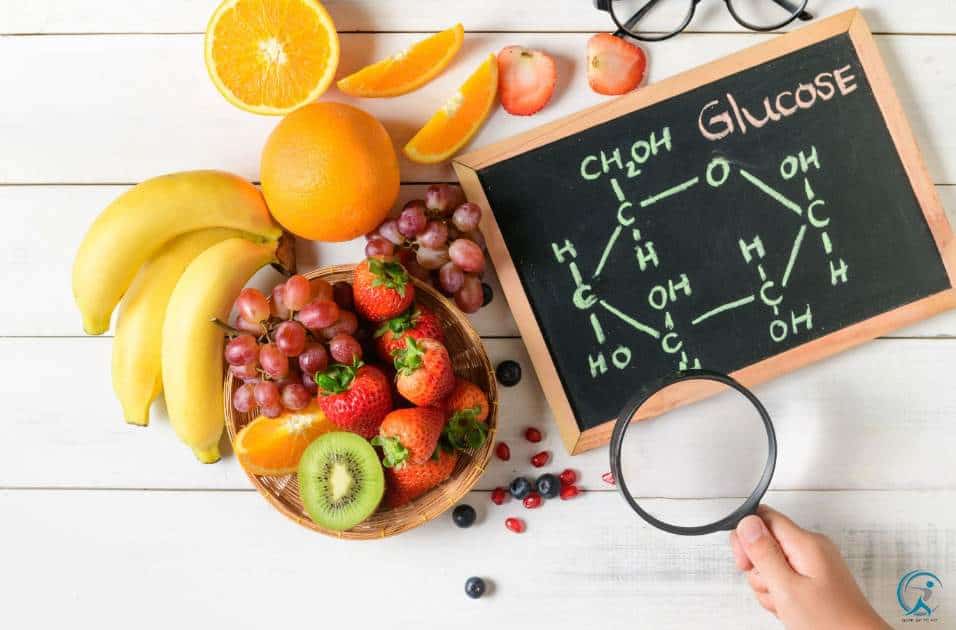Anaerobic metabolism is a vital component of your daily life. Find out how anaerobic metabolism enhances your daily life.

Anaerobic metabolism is a form of energy production that doesn’t involve oxygen. It’s how your body makes energy without oxygen, and it’s responsible for the growth of newborns; it also makes you break into a sweat when exercising or get altitude sickness when you fly too high. The good news is that you can improve your anaerobic metabolism by eating protein and exercising consistently—and changing how your body metabolizes food so that more calories are burned instead of stored as fat!
Without an anaerobic metabolism, we wouldn’t be able to walk across the street.
Anaerobic metabolism is the metabolic process that allows you to get up and walk across the room. It’s also responsible for your muscles contracting, relaxing, breathing, and even digestion. Your body uses anaerobic metabolism to make energy to perform these functions.
Without it, we wouldn’t be able to run across the street or even hold up our heads!
Anaerobic metabolism is behind most of your day-to-day activities.
Anaerobic metabolism is the process by which your body produces energy without oxygen. This happens in various ways, but most commonly, it’s through phosphagen (ATP) storage and recovery, which allows you to produce lots of ATP when you need it for short bursts of exercise.
This is important to understand because anaerobic metabolism is behind most of your day-to-day activities; walking around town or doing housework requires lots of ATP production, as do talking and singing. Without this ability to produce ATP rapidly, we’d be unable to get through our days without collapsing from exhaustion!
Anaerobic metabolism is how our bodies make energy without oxygen.
It’s also a key component of the body’s fight-or-flight response, allowing us to run from danger and survive if we’re injured.
In short, it’s a necessary process that enables you to perform at your best when faced with stressful situations or environments where oxygen is limited (like high altitudes).
However, the benefits of anaerobic metabolism don’t stop there. If you’ve ever felt like your mood is impacted by exercise—and who hasn’t?—you may be surprised to learn that this could have something to do with anaerobic metabolism too!
Anaerobic metabolism is responsible for the growth of newborns.
You were probably not much bigger than a tennis ball when you were born. But over time and with proper nutrition, your body uses its anaerobic energy sources to grow into an adult human with all the parts necessary to survive on Earth—a process known as postnatal life.
The same is true for adults; our bodies rely on anaerobic metabolism when exercising or performing strenuous physical labor, like lifting heavy objects or running long distances at high speeds. It’s also important during periods of high exertion that last less than five minutes—such as sprinting from one building to another during a fire drill; this kind of activity will be discussed later in this article.
Anaerobic metabolism makes us break into sweat.




- Sweating is a great way to cool down.
- Sweating is an efficient way to get rid of waste products.
- Sweating regulates body temperature and weight.
- Sweating maintains the pH balance in your body!
Anaerobic metabolism is the cause of altitude sickness.
You probably know that oxygen is critical to every living thing. But did you know that some forms of metabolism can occur without oxygen? It’s called anaerobic metabolism, when your body needs more energy than it can get from the air around you.
Anaerobic metabolism—the process by which cells break down sugars without using oxygen—occurs at high altitudes. At sea level, molecular nitrogen (N2) is one of our atmosphere’s primary gases. As altitude increases, there is less N2 and more oxygen than other gases like carbon dioxide (CO2) and water vapor (H2O). Because there’s less N2 for us to breathe, our bodies must process our respiration differently at high elevations. As a result, we produce lactate rather than CO2 as part of anaerobic respiration.
Anaerobic metabolism can make your muscles sore when you’re done exercising.
As we’ve mentioned, anaerobic metabolism can result in muscle damage, which will cause your body to produce lactic acid. When this happens, your muscles become sore and stiff. This isn’t necessarily bad—it’s just a sign that you worked hard enough to make them do something they’re not used to!
You can’t change your genetic make-up, but you can improve your anaerobic metabolism with exercise.




The good news is that you can improve your anaerobic metabolism with exercise. Anaerobic metabolism is a muscle adaptation that can be improved with exercise.
That’s because the type of muscle fibers you have—fast-twitch or slow-twitch—is determined by genetics, but it’s not set in stone. Genetics determine how many fast-twitch and slow-twitch muscle fibers you were born with; if you were blessed with more fast-twitch fibers than slow, congratulations! You’ve got an advantage when it comes to sprinting away from trouble or completing other high-intensity activities. To see this principle in action, look at how elite sprinters win races: they can use their fast twitch muscles to their full potential because they’ve trained them over time through a specific kind of training called plyometrics (plyometrics will be explained later).
On the other hand, if you were born with fewer fast-twitch than slow-twitch muscle fibers, then don’t worry too much about it since there are ways for us common folk who aren’t blessed with superhuman genes (like Usain Bolt) to still get the most out of our bodies and live longer lives despite what nature has given us genetically.
You need to eat protein to maximize your anaerobic metabolism.
Protein is essential to build muscle, repair muscle, maintain muscle, avoid muscle loss, avoid muscle wasting, and even avoid muscle atrophy. Protein can help you achieve that fit and toned body you’ve always wanted.
The human body contains roughly 20 amino acids (building blocks of protein) used by the body for various functions. Eight amino acids cannot be produced by the human body and must be obtained through food intake or supplementation. These eight essential amino acids are phenylalanine, valine, threonine, tryptophan; methionine; leucine; isoleucine; lysine, and histidine.
You have a limited capacity for anaerobic metabolism, and it can be depleted if you do too much too soon.
Anaerobic metabolism is a limited resource that you must use sparingly. If you try to do too much too soon, your energy will be depleted, and your performance will suffer.
You can’t just hit the gym and expect to have your capacity restored by the time you’re done with your workout. Your body needs time to recover after anaerobic exercise to rebuild its stores of ATP and phosphocreatine. This process doesn’t happen overnight; it takes at least 24 hours of rest before they’re back up to their maximum capacity.
Some people are naturally better at anaerobic metabolism than others.
If you aren’t already accustomed to anaerobic metabolism, don’t try to do too much, too soon. While you might be tempted to crank up the intensity of your workout if you want faster results, this may not pay off in the long run if it causes any strain or injury. It’s also important not to overdo it; remember that everything will take longer than normal when you learn to perform anaerobic exercises properly—so give yourself time and space for practice!
If you have never done any anaerobic activities before (or if those activities were limited), start small with just one or two types of exercise per week at first, then build up slowly over time so your body has an opportunity for adaptation.
The difference between aerobic and anaerobic metabolism




Aerobic metabolism is a process that requires oxygen to generate ATP. This type of metabolism is used by all cells in the human body, even those that are anaerobic. Aerobic metabolism relies on many different reactions, but the main one is where glucose is broken down into carbon dioxide and water.
Anaerobic metabolism is a process that does not require oxygen to generate ATP. Instead, it uses other substances in place of oxygen or less energy than aerobic respiration. This type of metabolism is used by muscle cells when they need to produce quick bursts of energy for short periods (for example, sprinting). Anaerobic respiration also occurs in the brain during short-term high-intensity exercise such as weightlifting or sprinting. It takes too long for blood to deliver enough oxygen from the lungs to muscle cells during intense activity.
Anaerobic Metabolism and Mitochondrion
The mitochondrion is the power plant of cells. It’s responsible for generating most of a cell’s energy.
The mitochondrion is a tiny spherical organelle inside all animal cells, except red blood cells. It has its own DNA, which differs from the DNA found in chromosomes within the nucleus. Mitochondria are also thought to have their own cellular “mind” or intelligence that scientists call bioenergetics, which controls how they produce energy and respond to signals from other parts of the cell.
Mitochondria are necessary for most life on Earth, providing energy for all eukaryotic (nucleus-containing) organisms. They produce adenosine triphosphate (ATP), which provides energy for cellular work and regulates many metabolic processes within cells.
Anaerobic Metabolism and Lactic Acid
During intense exercise, your body produces lactic acid faster than it can remove it from the bloodstream. When this happens, your muscles begin to feel fatigued because lactic acid interferes with the ability to contract muscles effectively. As your body continues to work out in this condition, lactic acid accumulates at higher levels within your muscles and bloodstream, which further increases fatigue until you stop exercising or rest completely for several minutes before continuing with more strenuous activity again later on down the road when you’ve recovered from previous bouts of fatigue in between sets or reps during your workout session(s).
Anaerobic Metabolism and Hypoxia
In the presence of hypoxia, anaerobic metabolism is a series of chemical reactions in the cell without oxygen. These reactions produce energy and waste products that can harm the body if they build up. The main waste product of anaerobic metabolism is lactic acid, which accumulates when there is insufficient oxygen-rich blood to carry it away from muscles. This accumulation causes muscle fatigue, cramps, and pain.
The first stage of anaerobic metabolism involves glycolysis (glucose breakdown). Glycolysis begins with glucose being broken down into pyruvate through a series of steps that generate ATP (adenosine triphosphate) as well as NADH (reduced nicotinamide adenine dinucleotide) and NADPH (reduced nicotinamide adenine dinucleotide phosphate). NADH and NADPH are coenzymes that donate electrons during electron transport chain reactions in the mitochondria, where energy production occurs without oxygen.
The second stage of anaerobic metabolism involves fermentation by pyruvate, producing lactic acid, ethanol, and ethyl alcohol as waste products if oxygen is present or lactate if it is not.
What Is Glycolysis?




Glycolysis is a metabolic pathway that converts glucose into pyruvate and generates some ATP (energy). The name of this pathway comes from the fact that it breaks down glucose into two smaller molecules: pyruvate and NADH+H+.
Glycolysis is an anaerobic process because it does not require oxygen to function. Glycolysis occurs in the cytoplasm of cells and produces two ATP molecules per glucose molecule broken down.
What is Cellular Metabolism?
Cellular metabolism is the metabolic activity within a single cell. It is a tightly regulated process that allows a cell to maintain the right balance between the synthesis of macromolecules (proteins, lipids, nucleic acids) and their degradation, as well as to coordinate different biochemical processes among intracellular compartments.
The main function of cellular metabolism is to provide energy for all cells. The human body contains about 10 trillion cells, each with its own metabolism. Each of these cells consumes energy from the food we eat or from other sources such as sunlight or chemical reactions in the body’s tissues.
Cerebral Blood Flow and Brain Metabolism
Cerebral Blood Flow (CBF) is the volume of blood pumped by the heart per minute through the brain. CBF is typically measured with a radioactive tracer, such as xenon 133 or technetium 99m, which can be imaged to determine its distribution throughout the brain.
Cerebrospinal fluid (CSF) is the fluid that surrounds and protects your brain and spinal cord. CSF is contained within four ventricles. Two lateral ventricles at the sides of your brain, the third ventricle in front of them, and a fourth ventricle at the back of your skull. CSF circulates between these ventricles to allow for constant exchange with interstitial fluid in the tissues surrounding the brain. CSF also circulates through narrow channels in the subarachnoid space outside of blood vessels called arachnoid villi, which project into the interstitial tissue.
Brain Metabolism refers to all chemical reactions inside your brain at any time.
Anaerobic Metabolism of Carbohydrates in the Red Blood Cell
The anaerobic metabolism of carbohydrates in the red blood cells is similar to that in muscle cells. The glycolysis steps are the same, but the Krebs cycle steps differ because no oxygen is available.
The glycolytic pathway begins with glucose being broken down into pyruvate, which then enters the mitochondria and undergoes the process of aerobic oxidation to produce ATP. In anaerobic conditions, however, pyruvate cannot enter the mitochondria because they are sealed off from the outside by a membrane that does not allow any molecules to pass through it. Instead of aerobic oxidation, pyruvate is converted into lactic acid via anaerobic fermentation within the confines of the red blood cell itself.
Conclusion
Anaerobic metabolism is a vital part of our daily lives and can even be fun. Try exercising if you’re looking for a way to improve your anaerobic metabolism. It’s best if you start out slow and build up over time, so you don’t get burned out before you even start!
FAQ about Anaerobic Metabolism
The body switches from anaerobic to aerobic metabolism relatively quickly, usually within a few minutes. This switch is primarily due to the body’s need for oxygen to continue producing energy.
Yes, anaerobic respiration is a chemical reaction that occurs without oxygen. This process occurs in all living organisms but especially in microorganisms, such as fermentation and the digestive tracts of animals and humans.
The difference between aerobic and anaerobic exercise is the amount of oxygen your body uses during the activity. Aerobic activity requires oxygen, which your body gets from the blood. Anaerobic activity does not require oxygen and can be sustained for only a short period. Anaerobic exercises include weightlifting, sprinting, and heavy resistance training.
Anaerobic energy production is your body’s most powerful and immediate form of energy production. It’s a quick burst lasting from five seconds to a few minutes.
The process of anaerobic glycolysis is a pathway that produces ATP in the absence of oxygen. Glycolysis is a process that converts glucose into pyruvate—the first step of aerobic respiration.
Aerobic respiration occurs in the mitochondria of cells. This process uses oxygen to break down glucose and release energy in the form of ATP. When oxygen is unavailable, as in muscle cells during intense exercise, anaerobic respiration occurs. This process does not release as much energy as aerobic respiration but can occur without oxygen.
Alex is a fitness aficionado, empowers others towards healthier, active lives through small, sustainable changes for lasting results. Visit Gearuptofit.com for insightful tips and resources to enrich a balanced lifestyle.